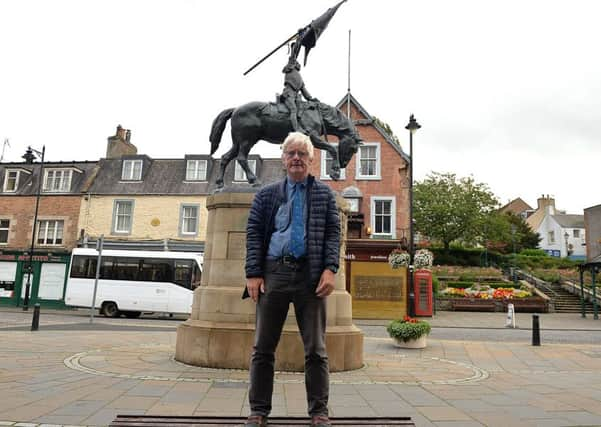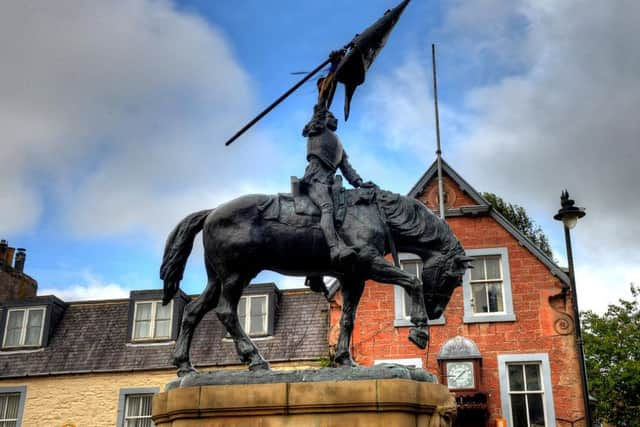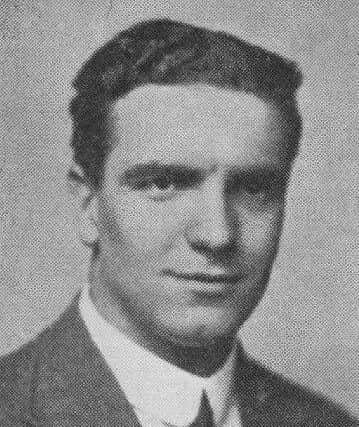Hawick folk urged to turn out for tribute to horse statue sculptor


Townsfolk are invited to turn out in large numbers to pay tribute to William Beattie on Wednesday, October 3, for a walk from Lovel Court to the 1514 memorial.
Hawick-born Beattie was just 31 when he died of battlefield wounds at a field hospital near Joncourt in northern France on October 3, 1918, weeks before the end of the First World War.
Advertisement
Hide AdAdvertisement
Hide AdFour years earlier, his greatest work, Hawick’s horse statue, had been unveiled on the 400th anniversary of the 1514 skirmish at Hornshole it commemorates, a victory for the youths of the town over an English raiding party.


The procession is being organised by Hawick Archaeological Society as a way of commemorating Beattie’s lasting legacy.
Society member, historian and former Hawick High School teacher Ian Landles will also be giving an illustrated talk as part of other commemorations marking Beattie’s untimely passing.
He is urging Teries to go along to “commemorate one of their own”, adding: “We wanted to do something because the horse is such an iconic memorial, so we set up a wee committee and the idea came from that.
Advertisement
Hide AdAdvertisement
Hide Ad“My father’s cousin William Landles, who was one of the top Scottish sculptors, reckoned it was one of the finest equestrian statues in Britain and equalled anything in London, and it means such a lot to Hawick folk of course.


“It’s on all sorts of logos and letterheads and is a symbol of what happened in 1514 and the background to the common riding.
“It was unveiled in common riding week in 1914, and William Beattie was there.
“After he was killed, his father came and carved the sad intimation of his son’s death on the base of the memorial.
Advertisement
Hide AdAdvertisement
Hide Ad“Beattie had been commissioned to do it. There were various people who submitted entries to do the memorial, and it was his that was chosen because it was so striking.
“There’s a lot of interesting things about it. For example, the young boy is seen returning in triumph, but if you look at the horse you can see it’s been in a battle.
“The sad thing is he would have gone on to achieve so much more.
“He had, all being well, 50 years ahead of him as a sculptor and many new projects, but that wasn’t to be.
Advertisement
Hide AdAdvertisement
Hide Ad“We definitely want people to come along and replicate what happens on common riding Thursday night, when the town’s people walk behind the cornet.
“The colours will be there, but it’s not a military parade.
“We want it to be just a procession of ordinary Hawick folk, commemorating one of their own.”
The procession sets off from Lovel Court at 6.15pm and arrives at the memorial for 6.30pm. Hawick Drums and Fifes, Hawick Saxhorn Band and the Hawick Scout Pipe Band will be playing on the night.
October 3’s procession isn’t the only celebration of the all too short life of Beattie being lined up.
Advertisement
Hide AdAdvertisement
Hide AdA week afterwards, Ian will be accompanying a group of townsfolk to Tincourt New British Cemetery, near where the Battle of the Somme was fought, for the laying of a wreath on Beattie’s grave.
There’s a chance to find out more about Beattie’s life and works when Mr Landles and fellow Hawick Archaeological Society member Alan Brydon give an illustrated talk, entitled William Beattie and the 1514 Memorial, on Tuesday, October 2, in the high school’s assembly hall, from 7.30pm, too.
An exhibition on Beattie is also being staged at the Borders Textile Towerhouse, at Tower Knowe, from October 3 to the following Wednesday, October 10.